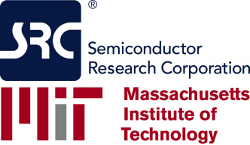
MIT researchers sponsored by Semiconductor Research Corporation (SRC), the world’s leading university-research consortium for semiconductors and related technologies, have introduced new directed self-assembly (DSA) techniques that promise to help semiconductor manufacturers develop more advanced and less expensive components.
The MIT research focuses on the issue of next-generation lithography in the semiconductor manufacturing process. Photolithography at a 193 nanometer (nm) wavelength is currently used for semiconductor device manufacturing, but that is reaching its limit with feature sizes around 25 nm. Electron-beam lithography can produce smaller features and is used for mask making, one of the critical steps in semiconductor manufacturing. However, the throughput of electron-beam lithography is currently insufficient for sub-20 nm resolution patterning over large areas.
The MIT study demonstrates that complex patterns of lines, bends and junctions with feature sizes below 20 nm can be made by block copolymer self-assembly guided by a greatly simplified template. This study explained how to design the template to achieve a desired pattern. Electron-beam lithography was used to produce the template serially, while the block copolymer filled in the rest of the pattern in a parallel process. This hybrid process can be five or more times faster than writing the entire pattern by electron beam lithography.
“We believe our research will help Moore’s Law to be continued,” said Caroline Ross, MIT professor of Materials Science and Engineering. “To increase the density of transistors in a given area, the pitch of the features in a transistor should be scaled down, but the increasing time and cost of manufacturing such fine and dense features becomes more problematic. Our research suggests a solution to this problem.”
Leveraging block copolymer self-assembly to produce dense, high resolution patterns was proposed and demonstrated several years ago, but there was no systematic way to design templates to achieve a complex block copolymer pattern. The MIT study developed a simple way to design a template to achieve a specific block copolymer pattern over a large area. Although the work used electron-beam lithography to define the template, other methods such as photolithography with trimming could be used to produce the templates.
Block copolymer lithography is already on the semiconductor industry roadmap as directed self-assembly, but the process is still in its infancy. Although DSA patterning has been demonstrated on 300 millimeter wafers, these early trials used templates fabricated by photolithography with limited resolution and limited control of the feature geometry. The MIT process offers a path to far more complicated geometries using relatively simple templates. Next steps involve the research being shared with semiconductor companies for further studies.
“The demand for computing processors with higher bandwidth and memories of larger capacity continues to grow, but the manufacturing cost of these devices is also increasing as the transistor and associated interconnect dimensions shrink,” said Bob Havemann, Director of Nanomanufacturing Sciences at SRC. “Lithography research such as the work completed by the MIT team is critically important as the required feature sizes in semiconductor manufacturing scale below what is achievable with conventional lithography techniques.”
For more information on the MIT research that was also sponsored by the National Science Foundation, visit http://www.nature.com/ncomms/2014/140217/ncomms4305/full/ncomms4305.html.
About SRC
Celebrating more than 30 years of collaborative research for the semiconductor industry, SRC defines industry needs, invests in and manages the research that gives its members a competitive advantage in the dynamic global marketplace. Awarded the National Medal of Technology, America’s highest recognition for contributions to technology, SRC expands the industry knowledge base and attracts premier students to help innovate and transfer semiconductor technology to the commercial industry. For more information, visit www.src.org.
MEDIA CONTACT:
Dan Francisco
Integrity Global for SRC
dan@integrityglobal.biz
916-812-8814
